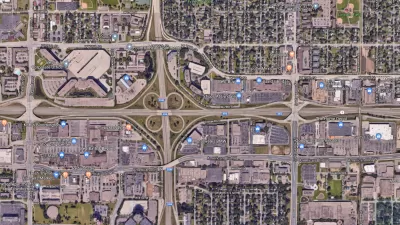A writer laments the lack of return on investment reflected by a state DOT's decision to fund a highway-widening project for $20 million that will serve 1,100 daily car trips.
"MNDOT recently announced that it will be spending roughly 20 million to fix up Highway 66 which connects Good Thunder with Mankato." The problem with that plan, according to Matthias Leyrer, is that the choice to invest that much public money in this particular project is that it's a lot of money to spend on a very small amount of people, who may or may not even want the "improvements."
"The AADT (Average Annual Daily Traffic) for this road is 1,100 cars. Roughly double the residency of Good Thunder or essentially every citizen coming to and from Mankato every day. If you want, think about it as $20,000 per car. Oh, did I mention that the road is about 12 miles long? So yet another way of thinking about it is roughly $1.6m a mile."
"Furthermore, a lot of people don’t even want the road to change to the degree the state has in mind. The state wants to widen it, make it straighter and design it for higher speeds. When they told this to the county, most of the residents along the road said 'screw that!'"
Leyrer summarizes his frustration with the project and its implications about transportation planning: "We have a problem in this country of upgrading, fixing or building infrastructure even if it’s ROI is little or nothing. We then have to maintain this infrastructure which has huge financial implications on our city, state and national budgets."
FULL STORY: How to Blow $20,000,000 on 1,100 People

Alabama: Trump Terminates Settlements for Black Communities Harmed By Raw Sewage
Trump deemed the landmark civil rights agreement “illegal DEI and environmental justice policy.”

Study: Maui’s Plan to Convert Vacation Rentals to Long-Term Housing Could Cause Nearly $1 Billion Economic Loss
The plan would reduce visitor accommodation by 25% resulting in 1,900 jobs lost.

Planetizen Federal Action Tracker
A weekly monitor of how Trump’s orders and actions are impacting planners and planning in America.

This Toronto Suburb Has More Bus Riders Than Columbus, Ohio
Brampton, Ontario used gradual improvements in service to prove that if you build it, they will ride.

Paris Bike Boom Leads to Steep Drop in Air Pollution
The French city’s air quality has improved dramatically in the past 20 years, coinciding with a growth in cycling.

Why Housing Costs More to Build in California Than in Texas
Hard costs like labor and materials combined with ‘soft’ costs such as permitting make building in the San Francisco Bay Area almost three times as costly as in Texas cities.
Urban Design for Planners 1: Software Tools
This six-course series explores essential urban design concepts using open source software and equips planners with the tools they need to participate fully in the urban design process.
Planning for Universal Design
Learn the tools for implementing Universal Design in planning regulations.
Smith Gee Studio
Alamo Area Metropolitan Planning Organization
City of Santa Clarita
Institute for Housing and Urban Development Studies (IHS)
City of Grandview
Harvard GSD Executive Education
Toledo-Lucas County Plan Commissions
Salt Lake City
NYU Wagner Graduate School of Public Service




























